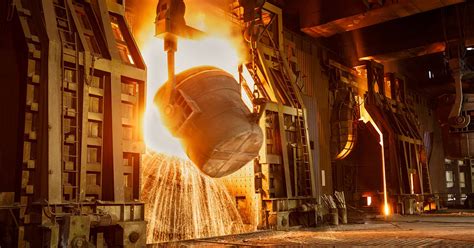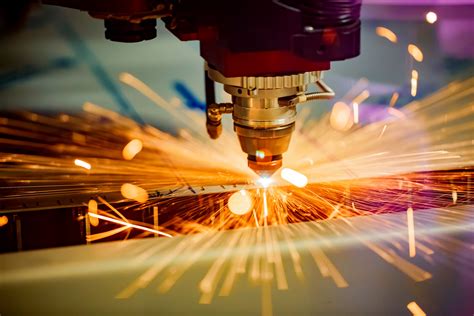date metal fabrication technology The future of metal fabrication is characterized by innovation and adaptability. As the trends above continue to unfold, metal manufacturing will become more efficient, sustainable, and versatile, shaping the world in new and exciting ways. Why are there 3 cables in the box? One cable brings power from "upstream", either directly from the circuit breaker to the fan, or from the breaker via another fixture. One cable leads from the fan to the switch.
0 · technology in metal manufacturing
1 · technology in metal making
2 · new technologies in metal manufacturing
3 · new technologies in metal fabrication
4 · metal manufacturing trends
5 · metal manufacturing industry
6 · metal fabrication trends
7 · metal fabrication industry
Precision and Accuracy: CNC machining provides unmatched precision, essential for medical devices that must adhere to strict tolerances. This accuracy is crucial in applications ranging from surgical instruments to implants, ensuring they perform safely and effectively within the human body.
Metal fabrication is poised for a bright future due to its innovative and efficient approach. Its balance between new techniques and traditional practices ensures a modern .
Automation equipment like robotic total stations, multi-access cutting and milling machines, and computer numerical control (CNC)-driven devices have all advanced the metal fabrication industry by allowing for more .
technology in metal manufacturing
technology in metal making
At first glance, the technology seemed far away from metal fabrication. But in the adjacent hall in Chicago’s McCormick Place, in the far front corner, EWI showcased tele-welding technology, allowing expert welders to .We’ll explore the fundamentals of common metal fabrication processes such as forging, casting, extrusion, machining, stamping and punching operations.The future of metal fabrication is characterized by innovation and adaptability. As the trends above continue to unfold, metal manufacturing will become more efficient, sustainable, and versatile, shaping the world in new and exciting ways.In the realm of steel fabrication, advancements in cutting-edge technology are revolutionizing the way steel structures are crafted. From precision cutting to seamless welding and intricate forming, the steel fabrication industry is .
Integrating automation and robotics into traditional fabrication processes is one of the most significant transformations to date. Metal fabrication, historically labor-intensive, is witnessing a paradigm shift towards automation-driven efficiency. With laser cutting, 3D printing and other new fabrication methods introduced in the industry, the demands are undeniably changing. Let’s take a closer look at the technologies and trends that. In recent years, there have been several trends and technologies in metal fabrication that have emerged to change the face of this industry. These include automation and robotics, 3D printing, computer-aided design and manufacturing, additive manufacturing, advanced materials, and the integration of IoT and Industry 4.0 technologies. Metal fabrication is poised for a bright future due to its innovative and efficient approach. Its balance between new techniques and traditional practices ensures a modern-day solution. . it employs state-of-the-art technology, allowing for more complex designs and refined products with tighter tolerances and higher strength-to-weight ratios .
Automation equipment like robotic total stations, multi-access cutting and milling machines, and computer numerical control (CNC)-driven devices have all advanced the metal fabrication industry by allowing for more precise measurements, fabrication cuts and bends, and installation tolerances. It’s a complicated time for metal manufacturers. The industry faces wage pressures and a skills gap, but metal fabrication technology continues to march forth faster than ever. At first glance, the technology seemed far away from metal fabrication. But in the adjacent hall in Chicago’s McCormick Place, in the far front corner, EWI showcased tele-welding technology, allowing expert welders to control and teach robotics from a remote location.
We’ll explore the fundamentals of common metal fabrication processes such as forging, casting, extrusion, machining, stamping and punching operations.The future of metal fabrication is characterized by innovation and adaptability. As the trends above continue to unfold, metal manufacturing will become more efficient, sustainable, and versatile, shaping the world in new and exciting ways.In the realm of steel fabrication, advancements in cutting-edge technology are revolutionizing the way steel structures are crafted. From precision cutting to seamless welding and intricate forming, the steel fabrication industry is experiencing a dynamic shift propelled by innovative techniques.
Integrating automation and robotics into traditional fabrication processes is one of the most significant transformations to date. Metal fabrication, historically labor-intensive, is witnessing a paradigm shift towards automation-driven efficiency. With laser cutting, 3D printing and other new fabrication methods introduced in the industry, the demands are undeniably changing. Let’s take a closer look at the technologies and trends that. In recent years, there have been several trends and technologies in metal fabrication that have emerged to change the face of this industry. These include automation and robotics, 3D printing, computer-aided design and manufacturing, additive manufacturing, advanced materials, and the integration of IoT and Industry 4.0 technologies. Metal fabrication is poised for a bright future due to its innovative and efficient approach. Its balance between new techniques and traditional practices ensures a modern-day solution. . it employs state-of-the-art technology, allowing for more complex designs and refined products with tighter tolerances and higher strength-to-weight ratios .
new technologies in metal manufacturing
Automation equipment like robotic total stations, multi-access cutting and milling machines, and computer numerical control (CNC)-driven devices have all advanced the metal fabrication industry by allowing for more precise measurements, fabrication cuts and bends, and installation tolerances. It’s a complicated time for metal manufacturers. The industry faces wage pressures and a skills gap, but metal fabrication technology continues to march forth faster than ever. At first glance, the technology seemed far away from metal fabrication. But in the adjacent hall in Chicago’s McCormick Place, in the far front corner, EWI showcased tele-welding technology, allowing expert welders to control and teach robotics from a remote location.We’ll explore the fundamentals of common metal fabrication processes such as forging, casting, extrusion, machining, stamping and punching operations.
The future of metal fabrication is characterized by innovation and adaptability. As the trends above continue to unfold, metal manufacturing will become more efficient, sustainable, and versatile, shaping the world in new and exciting ways.In the realm of steel fabrication, advancements in cutting-edge technology are revolutionizing the way steel structures are crafted. From precision cutting to seamless welding and intricate forming, the steel fabrication industry is experiencing a dynamic shift propelled by innovative techniques.
Integrating automation and robotics into traditional fabrication processes is one of the most significant transformations to date. Metal fabrication, historically labor-intensive, is witnessing a paradigm shift towards automation-driven efficiency.


new technologies in metal fabrication

metal manufacturing trends
metal manufacturing industry
metal fabrication trends
Some kids get it the first time and other take a lot more experiences before they get it. Also, if they spend weeks or months not seeing or using the distributive property, then they have to learn it again. Here I’ve curated a list of activities that I’ve used or that I want to use.
date metal fabrication technology|metal fabrication industry